
by Laurie Osgood | Mar 20, 2018
 https://www.pexels.com/photo/blue-and-silver-stetoscope-40568/
https://www.pexels.com/photo/blue-and-silver-stetoscope-40568/
According to the American Cancer Society, colorectal cancer is the third most common cancer in the United States and the second leading cause of death from cancer. Colorectal cancer is cancer that occurs in the colon or rectum. Colorectal cancer affects all racial and ethnic groups and is most often found in people ages 50 and older. https://www.cancer.org/cancer/colon-rectal-cancer.html
Cancer Screening Saves Lives!
The best way to prevent colorectal cancer is to get screened regularly starting at age 50. Colorectal cancer doesn’t always cause symptoms, initially – which makes it much more important to get screened regularly. Make sure to talk to your doctor about when you should begin cancer screenings, how often, and which test is right for you.
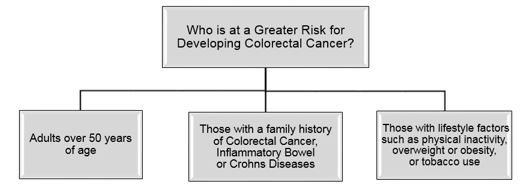
What Can You Do To Reduce These Risks?
- Get regular screening starting at age 50
- Encourage your family members and friends over age 50 to get screened.
- Don’t smoke
- Be physically active
- Eat a diet rich in fruits, vegetables and fiber, while avoiding high fat foods
The U.S. Department of Health and Human Services, Centers for Disease Control and Prevention (CDC) provides fact sheets with more information about colorectal and other cancers. To learn more, visit https://www.cdc.gov/cancer/index.htm.
To learn more about colorectal cancer education and prevention efforts in your community, visit the Florida Department of Health at http://www.floridahealth.gov/diseases-and-conditions/cancer/colon-cancer/index.html or contact them at (850) 245-4330.
For more information about UF/IFAS Family and Consumer Sciences Program with the Gadsden County Extension, please contact Laurie Osgood at (850) 875-7255.
by Marie Arick | Mar 20, 2018
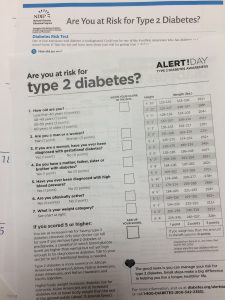
Diabetes Risk Test
Are you at risk for developing Type 2 Diabetes? The National Institutes of Health’s (NIH) and Centers for Disease Control and Prevention’s (CDC) annual Diabetes Alert Day is Tuesday, March 27, promoting awareness of Type 2 Diabetes and challenging people to assess their risk for developing Type 2 Diabetes.
Who is at risk? Almost 10% of the population of the United States! Over 7 million Americans are unaware they have diabetes. Additionally, the NIH states, “an estimated 84.1 million Americans aged 18 years or older have prediabetes.”
What is diabetes? The NIH defines diabetes as “a disease that occurs when your blood glucose, also called blood sugar, is too high.” A normal fasting blood sugar (have not had anything to eat or drink for 8 hours except for water) is less than 100 mg/dl when tested using a small blood sample. A prediabetes result would be in the range of 100 mg/dl to 125 mg/dl. Diabetes is a measure of 126 mg/dl or higher.
What does diabetes do to the body? The NIH links increased blood glucose and/or uncontrolled diabetes to other health issues including loss of eyesight, nerve damage, kidney disease and heart disease. The destruction resulting from the prolonged periods of increased blood glucose levels is devastatingly hard on the body as it can no longer make and use insulin effectively to keep blood sugar levels in the bloodstream at a normal level. The most common symptoms associated with diabetes are excessive thirst, tingling in the feet, sores that do not heal, and fatigue. Other symptoms include increased urination, increased appetite, blurred vision, and weight loss.
Diabetes Alert Day is March 27, 2018! Mark it on your calendar, gather friends and family, and take the Diabetes Risk Test together. Embrace the results and make an action plan. Understanding your risk can help you to make positive changes to protect your health. Research has proven that you can reduce your risk of developing diabetes by almost 60% if you lose weight (7% of your body weight if appropriate) and engage in moderate exercise for 30 minutes a day, 5 days a week. Developing healthy lifestyle habits such as swapping sugary drinks for water can go a long way to improving one’s health. Examine your current habits, decide what you feel you can easily adjust and make your plan.
Remembering the old adage, “an ounce of prevent is worth a pound of cure,’ rings particularly true in the case of diabetes. The National Diabetes Statistics Report, 2017 indicated those diagnosed with diabetes seeking care in 2012 spent $245 billion dollars, more than twice the dollar amount for medical care than a non-diabetic.
Don’t be a statistic! Take the Diabetes Risk Test today! Remember, no needles required.
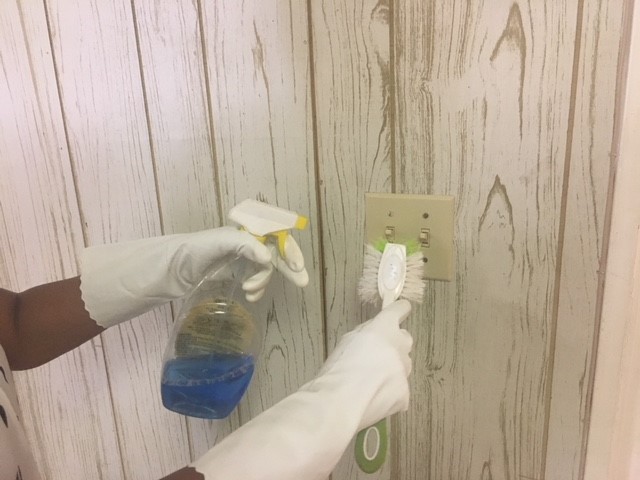
by Laurie Osgood | Mar 2, 2018
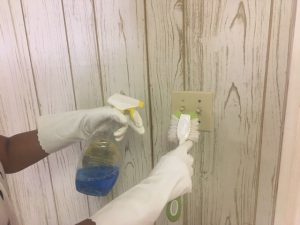
Clean light switches to reduce the spread of illnesses. Photo credit: NW Extension District
Seasonal influenza (flu) viruses are most common during the fall and winter, with peak activity occurring between December and February. According to the Centers for Disease Control and Prevention (CDC), the flu is a contagious respiratory illness caused by influenza viruses. It can cause mild to severe illness. Serious outcomes of flu infection can result in hospitalization or death. Some people, including senior adults, young children, and persons with certain health conditions, are at high risk for serious flu complications.
When someone in your family has had a cold or the flu, it is important to clean and sanitize your house properly to avoid any recurrences or further spreading. Follow these tips:
- Before you get started, try opening the windows for some fresh air, or raise your blinds or curtains to let in the natural light.
- Clean the areas first, then disinfect.
- Wash your hands often: before, during, and after cleaning.
IN THE BATHROOM
The bathroom will need a good cleaning and disinfection after an illness.
- Disinfect with a mixture of bleach and water. Use one scant teaspoon of chlorine bleach to one quart of water.
- Clean toilet lever, shower faucets, cabinet knobs, light switches, and doorknobs.
- Replace or clean toothbrushes.
|
IN THE KITCHEN
- Disinfect all things that people touch: refrigerator door handles; coffee pot; electric can opener; microwave oven; door, stove, and cabinet knobs; faucets; light switches. Do NOT use chlorine bleach with added fragrance, as it is not food-safe.
- Run all utensils through the dishwasher after each use.
- For more information on sanitizing the kitchen, see Cleaning and Sanitizing the Kitchen: Using Inexpensive Household Food-Safe Products.
|
IN THE FAMILY ROOM
- Clean remotes, phones, computer keypads, gaming systems, door knobs, and light switches.
- Sanitize all items with proper cleaning products.
|
IN THE BEDROOM
- Change pillow cases daily and wash soiled bed linens right away with proper laundry detergent.
- Wash everything in your washer on the hottest temperature the fabric allows, but be sure not to overload your washer.
- Disinfect all items on the night stand. Don’t forget light switches, doorknobs and drawer pulls, and remote controls, if used.
|
CLEANING KIDS’ TOYS
- Some stuffed animals can be cleaned in the washer with the other bedding.
- For hard-surfaced toys, make sure to clean with proper cleaning solutions for their surface and rinse well.
- Some small toys can be safely cleaned in a mesh laundry bag in the top rack of the dishwasher.
|
WHAT TOOLS ARE NEEDED?
- Rubber gloves
- A different sponge for each room you are cleaning or paper towels
- Proper cleaning products: Please be sure to follow all manufacturer’s instructions on all cleaning products.
According to the CDC, the flu virus can live on surfaces for 48 hours—potentially infecting anyone who comes in contact with the germs. Disinfecting the house is one of the best ways to prevent anyone else from contracting the illness.
For more information on sterilizing items in your home, visit the CDC Website, https://www.cdc.gov/oralhealth/infectioncontrol/questions/sterilization/cleaning.html
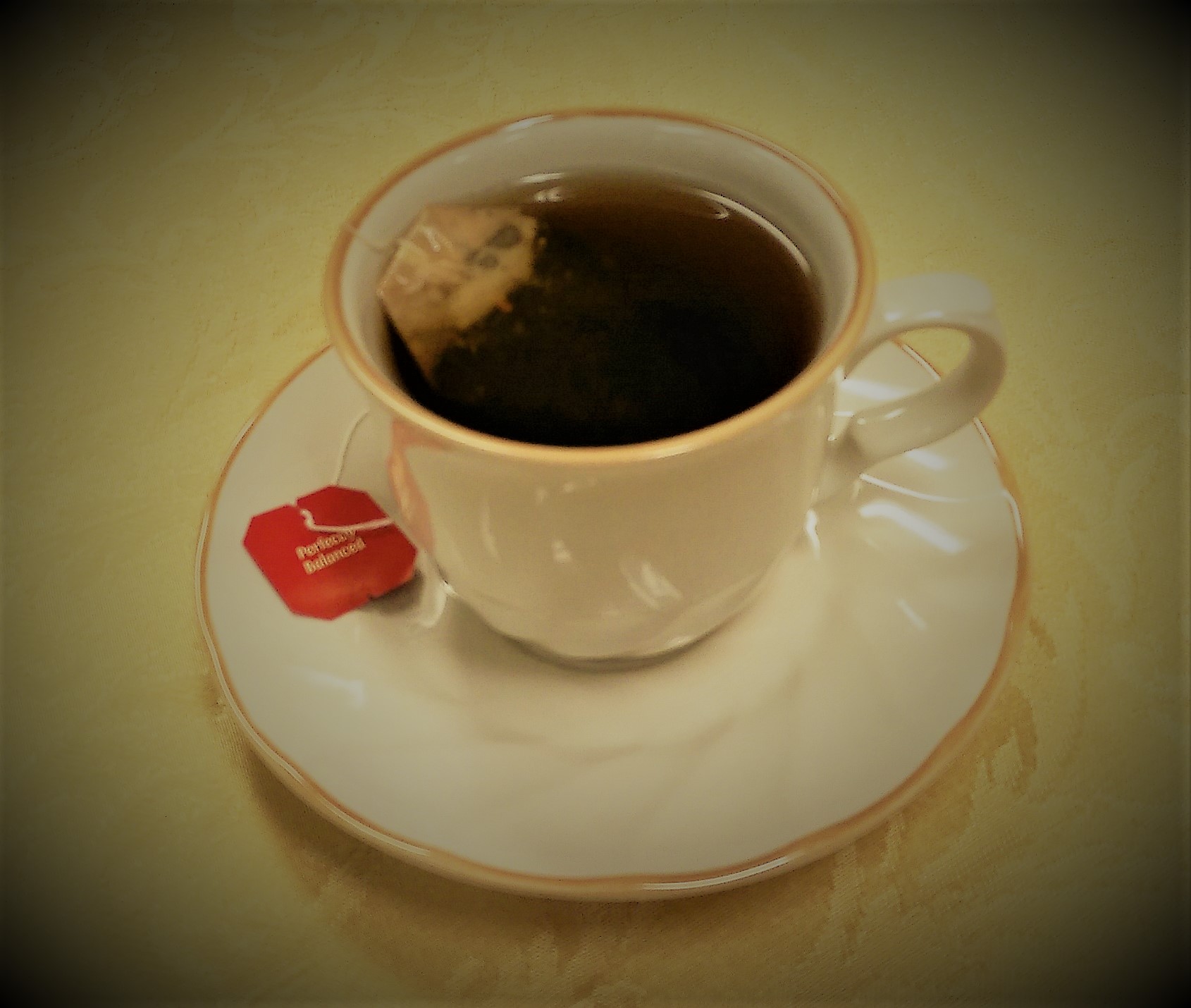
by Ginny Hinton | Feb 20, 2018
 When there’s a chill in the air, nothing sounds better than a hot cup of coffee or tea. But what are the health benefits and risks of these popular beverages? The answer may be much easier to swallow than you think.
When there’s a chill in the air, nothing sounds better than a hot cup of coffee or tea. But what are the health benefits and risks of these popular beverages? The answer may be much easier to swallow than you think.
Coffee
Americans consume over 400 billion cups of coffee every year. The drink has been blamed for everything from increased heart rate to insomnia – and those may be valid complaints, especially for heavy coffee drinkers. Recent studies give a brighter picture for those who drink a moderate amount. Black coffee has no calories or fat. The caffeine in coffee enhances mood and performance by blocking neurotransmitters that slow brain activity and by affecting other neurotransmitters (i.e. serotonin) that affect mood. In fact, 14 studies with healthy, rested subjects showed improved alertness, short-term recall and reaction time. In addition, coffee contains healthful antioxidants which may lower the risk of stroke and of heart disease in females. Moderate daily intake also helps keep the body hydrated. So, how much is too much? Because caffeine amounts vary among coffees, a maximum of 1/3 to 4 cups per day is recommended, depending on your java of choice.
Tea
On any given day, over 158 million Americans drink tea. There are three main varieties: black, green and oolong, and benefits depend on the type of tea. All tea is full of antioxidants, and the strongest evidence for health benefits is on the side of heart health. Black tea may protect against Type 2 Diabetes and there is some evidence for lowered heart attack and stroke risk. Green tea is a traditional Chinese remedy for headache and depression. It may also help with heart health by lowering cholesterol. Unfortunately, there is no direct evidence for tea being helpful with weight loss. Since typical caffeine levels for tea are less than half that of coffee (20-90 mg compared to 50-120 mg), the recommended maximum range of intake is 1 to 8 cups per day.
That’s the scoop! Enjoy your coffee and tea in moderation, limit added cream or sugar, and you’ll be treating your body well.
References:
Soong, J. (2011). What Counts as Water? Stay Hydrated and Healthy. http://www.webmd.com/parenting/features/healthy-beverages
Caruso, L., Shelnutt, K., Kauwell, G. (August 2014). Hydration Myths. http://edis.ifas.ufl.edu/fy1409.
Ruxton, C. (February 2008). The impact of caffeine on mood, cognitive function, performance and hydration: a review of benefits and risks. Nutrition Bulletin. 33(1): 15-25 http://onlinelibrary.wiley.com/doi/10.1111/j.1467-3010.2007.00665.x/full
Cochran, N. (January 2017). The Health Benefits of Tea. http://www.eatright.org/resource/health/wellness/preventing-illness/the-health-benefits-of-tea
by Laurie Osgood | Feb 7, 2018
What Are the Differences of the Symptoms of a Cold, The Flu And Allergies?
Laurie Osgood, Family and Consumer Sciences Agent, UF/IFAS Extension, Gadsden County, FL
 You’re coming down with something…you have a stuffy nose, you’re coughing and you have a sore throat. Do you have a cold, the flu or seasonal allergies? Because the symptoms can be similar, it is hard to know what you are suffering from. Identifying the differences between symptoms can help you choose the best treatment options. However, you will need to visit your health care provider to know for sure.
You’re coming down with something…you have a stuffy nose, you’re coughing and you have a sore throat. Do you have a cold, the flu or seasonal allergies? Because the symptoms can be similar, it is hard to know what you are suffering from. Identifying the differences between symptoms can help you choose the best treatment options. However, you will need to visit your health care provider to know for sure.
The National Institutes of Health says that the flu and the common cold are caused by different viruses. Colds, the flu and allergies can affect your respiratory system, making it hard to breath. However each condition has key symptoms that set them apart. Flu symptoms can be more severe than cold symptoms and can lead to additional complications. Allergy symptoms can be similar, however they are caused by your body’s immune system reacting to a trigger, or allergen such as pollen, or pet dander.
The National Institutes of Health (NIH) has developed a chart to compare the symptoms of the cold, the flu and airborne allergies. To learn more about these symptoms, visit NIH @ https://newsinhealth.nih.gov/2014/10/cold-flu-or-allergy .
| SYMPTOMS |
COLD |
FLU |
AIRBORNE ALLERGY |
| Fever |
Rare |
Severe and usually high (100˚- 102˚ F) |
Never |
| Headache |
Uncommon |
Common |
Uncommon |
| General Aches, Pains |
Slight |
Usual, sometimes severe |
Never |
| Fatigue, Weakness |
Sometimes |
Usual, up to 3 weeks |
Sometimes |
| Extreme Exhaustion |
Never |
Usually at onset of illness |
Never |
| Itchy, Watery Eyes |
Unusual |
Unusual |
Common |
| Stuffy, Runny Nose |
Common |
Sometimes |
Common |
| Sneezing |
Usual |
Sometimes |
Usual |
| Sore Throat |
Common |
Sometimes |
Sometimes |
| Cough |
Mild to moderate |
Common, can be severe |
Sometimes |
| Chest Discomfort |
Mild to moderate |
Common |
Rare, except for those with allergic asthma |
| Duration |
Can last up to two weeks |
Usually last 1-2 weeks |
Can last as long as allergens are present |
| Treatment |
Get plenty of rest
Stay hydrated
Contact your doctor if symptoms persist |
Get plenty of rest
Stay hydrated
See your doctor for flu treatment options |
Avoid allergens, such as pollen, mold, pet dander, etc.
See your doctor to determine cause of allergic reactions |
| Complications |
Sinus infection middle ear infection, asthma |
Bronchitis, pneumonia; can be life-threatening |
Sinus infection, middle ear infection, asthma |
The best way to prevent getting sick this season is to wash your hands often, avoid close contact with people who are sick, and if you are sick, stay home. There can be severe complications associated with the flu, so get your flu shot each year and contact your doctor if you suspect that you or a loved one has the flu.
To learn more about colds, the flu or allergies, visit the National Institutes of Health at https://www.nih.gov/, or the Centers for Disease Control (CDC) at https://www.cdc.gov/flu/consumer/symptoms.htm
For more information about UF/IFAS Family and Consumer Sciences Program with the Gadsden County Extension, please contact Laurie Osgood at (850) 875-7255.
by Heidi Copeland | Dec 2, 2017
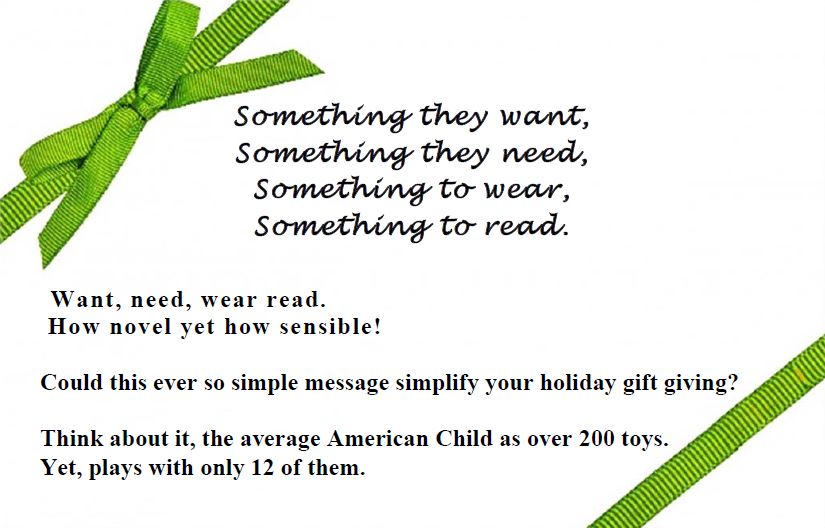 Recently, in what I thought would be a quick Saturday errand, I got stuck in traffic. It took me a moment to realize that the holidays are upon us.
Recently, in what I thought would be a quick Saturday errand, I got stuck in traffic. It took me a moment to realize that the holidays are upon us.
According to the National Retail Federation (NRF®), from Thanksgiving Day through Cyber Monday, more than 174 million Americans shopped in stores and online during the five-day holiday weekend, beating the 164 million estimated shoppers from an earlier survey. In fact, shoppers spent $1 million a minute on Black Friday and about $6.6 billion in total on Cyber Monday. The NRF® also found that consumers, both young and old, were spending more than last year, with both groups using the internet to browse for the best deals.
While it appears many consumers can spend unrestrained during the holidays, a lot of consumers find the holiday season stressful. Holidays require a lot of planning, and of course time and money.
A sensible way to approach the holiday season is to decide up-front what best fits the path you want to take. Come up with a plan, make a list (check it twice), and then stick to it. You will be amazed at how this simple list trick can relax you and make your holidays more enjoyable and less stressful.
The American Financial Services Association Education Foundation has some useful ideas for using a holiday spending plan. First, create a holiday budget that is feasible for you, and be sure to include all the incidentals from decorations to wrapping materials. Next, prepare your list(s), then do your homework. There is a lot of competition for the consumer’s money, and searching the web not only for information but also for the best deals can help you stick to your budget and save some money (Example: some stores honor other store’s pricing).
Other ideas to help stay within your budget this holiday include:
- Draw names with set limits on gift giving (Example: Aunt Marge – $15.00)
- Make a gift (Example: Cranberry muffins)
- Provide a service (Example: tackle a chore for a friend, neighbor, or loved one)
- Switch to giving gifts of experience (Example: tickets to an event) The gift of experience can be both practical and educational, and moreover, memories are worth more than stuff!
Try not to get bogged down by holiday spending this holiday season. I encourage you to create a plan, write up a list (check it twice) and stick to it. You will be glad you did!
The University of Florida Extension/IFAS – Leon County is an Equal Employment Opportunity Affirmative Action Institution.

 https://www.pexels.com/photo/blue-and-silver-stetoscope-40568/
https://www.pexels.com/photo/blue-and-silver-stetoscope-40568/







